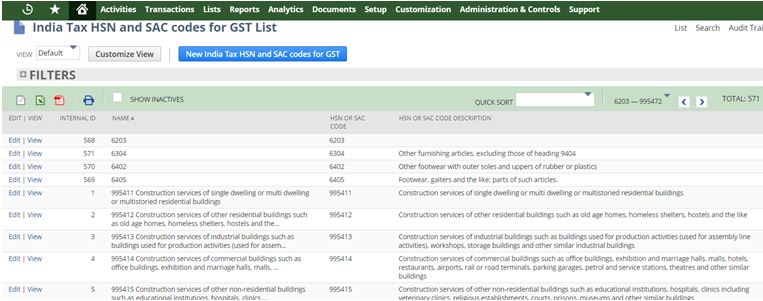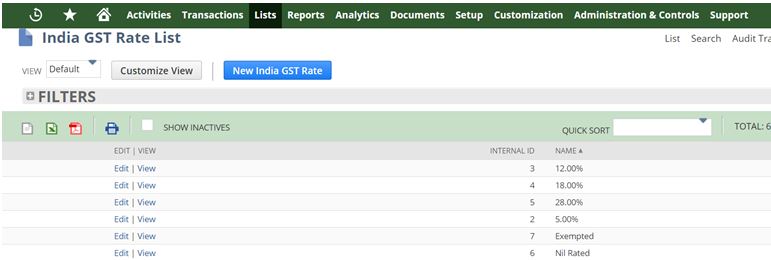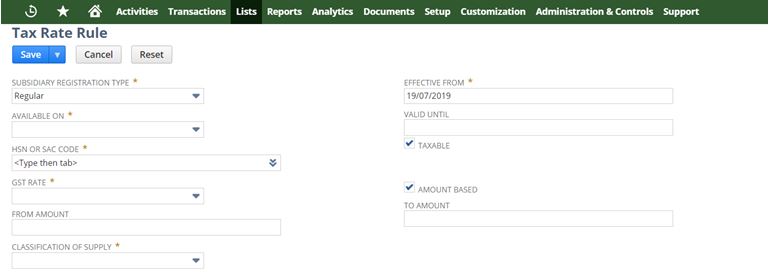If your company is using India Tax Bundle (from NetSuite) for India Taxation / GST, then whenever you are adding new products you may need to add GST rules for the product. In this post we will be outlining the steps to add GST rules for a new product in GST.
Adding new Item
There are few things that need to be taken care of while creating a new item, such as selecting appropriate “HSN Code”, “Nature of the item” etc.

Creating New HSN Code
There is already a list of HSN codes predefined in NetSuite. You can search for ‘India Tax HSN and SAC codes for GST List’ on global search to view them.

Here is a sample screenshot that shows the list of HSN codes –

Creating a new HSN code which is not mentioned in the existing list is possible by just clicking on blue button named as ‘New India Tax HSN and SAC codes for GST’. A similar page like below will open where HSN code and description can be entered.

Adding new GST Tax Rate
The taxes for items on sales or purchase transactions are levied based on GST tax rate rules associated with HSN codes.
Before creating tax rate rules, tax rates are to be created. India GST rates are already a part of GST Tax bundles. Please refer below screenshot.

To create a new GST Rate, click on ‘New India GST Rate’.
Creating New Tax Rate Rule for India GST
Navigate to ‘Setup -> India Localization -> Tax Rate Rules’ which shows the list of tax rate rules created. Clicking on ‘New Tax Rate Rule’ button to create a new rule.

Creating a new tax rate rule page would look like the screenshot placed below

- Select ‘Subsidiary or Company Registration Type’ and the options include ‘Regular’ or ‘Composite Dealer’.
- Select on which the tax rate rule should be available on either sales transactions or purchase transactions.
- Select the HSN code from the dropdown.
- Select GST Rate from the dropdown.
- If the tax rate rule is amount based, check ‘Amount Based’ checkbox then enter ‘From Amount’ and ‘To Amount’. This is useful in cases where GST rate changes based on price of product like in textile industry.
- Select ‘Classification of Supply’ from the options ‘Inter-State Supply’ and ‘Intra-State Supply’
- Select the effective date from when the tax rate rule should be active on the transactions.
- Select the Valid date if any.
- Check the ‘Taxable’ checkbox if the tax rate rule is taxable.
- After filling out the mandatory fields, click save to make the tax rate rule active.
Please note that for one tax rate there must be at least two rules created by selecting ‘Classification of Supply’ as ‘Inter-State Supply’ and ‘Intra-State Supply’ for both sales and purchase transactions.
If your company is facing GST challenges with your current ERP – migrate to NetSuite that has one of the most advanced GST Tax Engine. Contact us to know more about NetSuite ERP from Oracle and its India localization features.

 “NS Success” is the NetSuite Consulting Practice of Dhruvsoft Services Private Limited – a leading NetSuite Solution Provider Partner from India – providing services worldwide …
“NS Success” is the NetSuite Consulting Practice of Dhruvsoft Services Private Limited – a leading NetSuite Solution Provider Partner from India – providing services worldwide …